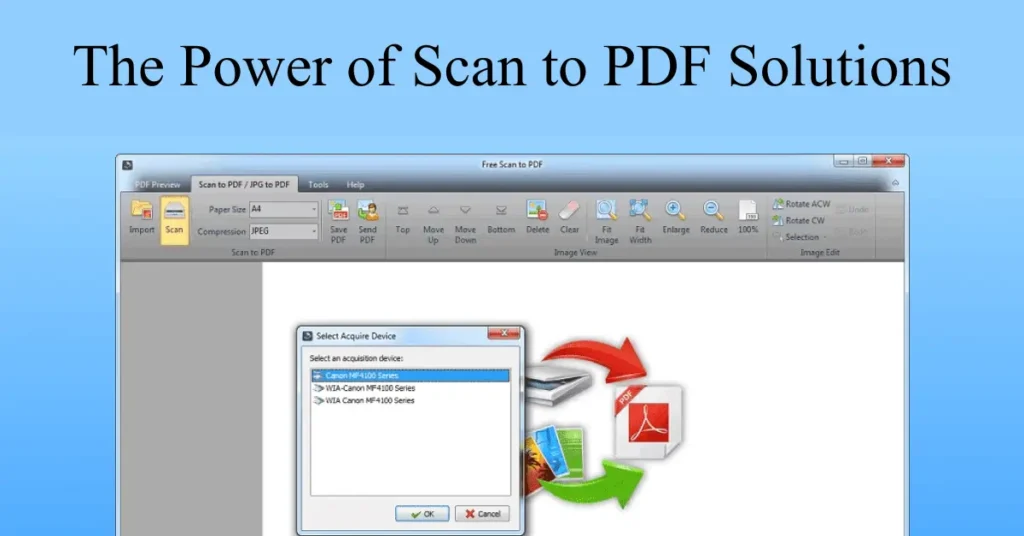In the realm of document management, efficiency and accessibility are paramount. Businesses, educational institutions, and individuals alike are constantly seeking ways to streamline workflows and digitize paper documents for improved organization and collaboration. In response to this demand, Scan to PDF technology has emerged as a versatile solution, offering a seamless process for converting physical documents into digital PDF format. Let’s delve into the importance of Scan to PDF technology and its transformative impact on document management practices.
Streamlining Document Digitization
Scan to PDF technology simplifies the process of digitizing documents by providing a straightforward method for converting paper documents into electronic format. With a scanner or mobile device equipped with scanning capabilities, users can easily capture images of paper documents and save them directly as PDF files. This eliminates the need for manual data entry and reduces the reliance on physical storage, leading to improved efficiency and cost savings.
Key Features and Functionality
Versatile Scanning Options: Scan to PDF solutions offer a variety of scanning options to accommodate different needs and preferences. Whether using a dedicated scanner, multifunction printer, or mobile device camera, users can choose the most suitable scanning method for their requirements.
High-Quality PDF Output: Advanced image processing algorithms ensure that scanned documents maintain their clarity and legibility when converted to PDF format. This includes features such as automatic image enhancement, text sharpening, and background removal, resulting in professional-looking PDF files.
OCR (Optical Character Recognition): Many Scan to PDF solutions incorporate OCR technology, allowing users to convert scanned text into editable and searchable content within the PDF file. This enhances document usability by enabling text searchability, copy-pasting, and editing.
Security Features: To protect sensitive information, Scan to PDF solutions often include security features such as password protection, encryption, and digital signatures. These measures ensure the confidentiality and integrity of scanned documents, especially when sharing them electronically or storing them in cloud-based repositories.
Real-World Applications
Businesses: Scan to PDF technology has revolutionized document management practices in businesses of all sizes. From scanning invoices and contracts to digitizing employee records and client documents, businesses benefit from improved organization, accessibility, and collaboration.
Education: Educational institutions leverage Scan to PDF technology to digitize textbooks, lecture notes, and student assignments, making educational materials more accessible and facilitating remote learning initiatives. PDF files can be easily shared with students and colleagues for enhanced collaboration and learning experiences.
Legal and Compliance: In the legal sector, Scan to PDF technology plays a crucial role in digitizing case files, court documents, and legal correspondence. By transitioning to digital document management, law firms improve efficiency, reduce paper clutter, and ensure compliance with regulatory requirements.
Conclusion
In conclusion, Scan to PDF technology has become an indispensable tool for modern document management practices. By offering versatile scanning options, high-quality PDF output, OCR capabilities, and robust security features, Scan to PDF solutions empower users to digitize documents efficiently and effectively. Whether in business, education, legal, or personal contexts, the benefits of Scan to PDF technology are undeniable. As organizations and individuals continue to embrace digital transformation, Scan to PDF technology will remain a cornerstone of efficient and accessible document management practices.
